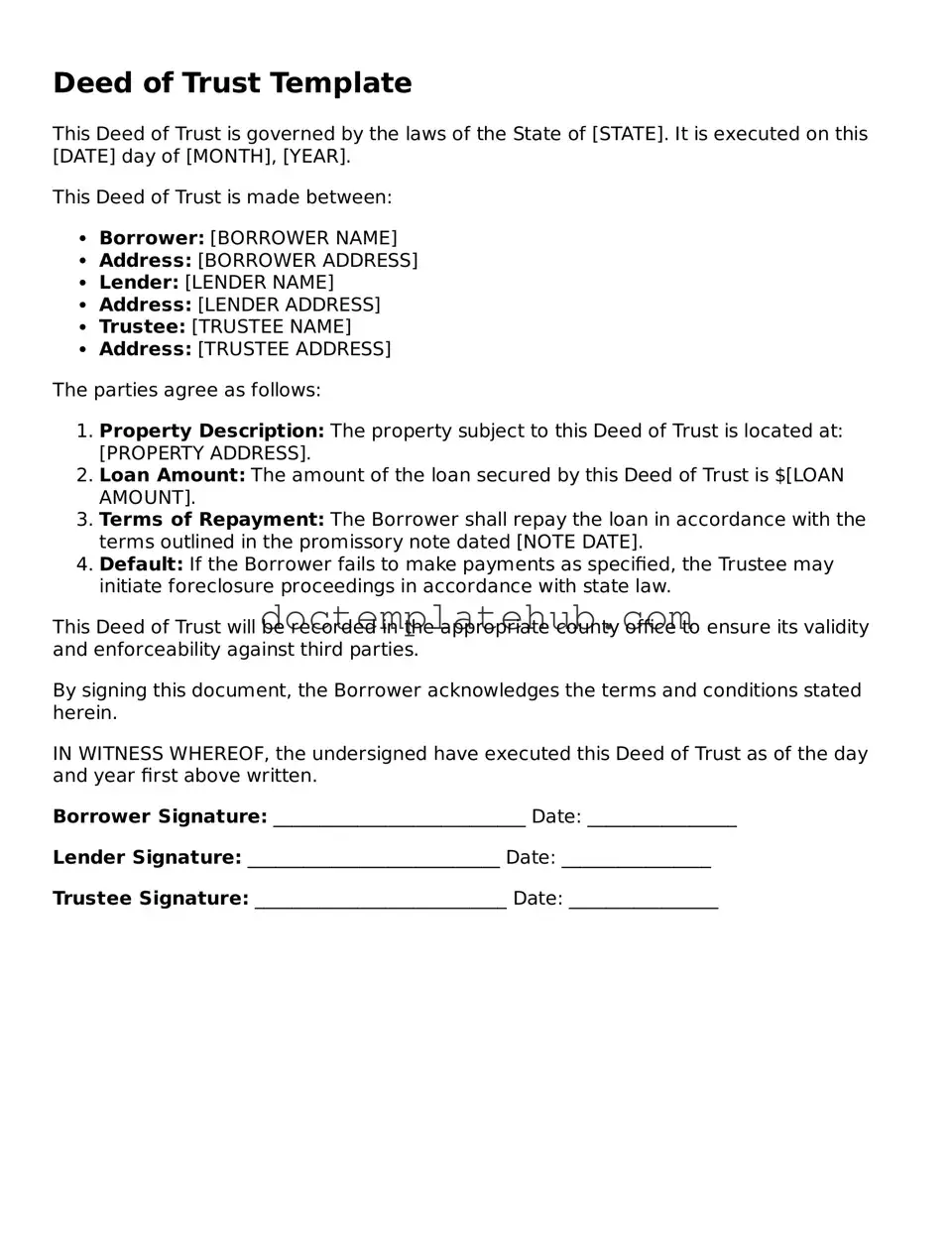What is a Deed of Trust?
A Deed of Trust is a legal document that secures a loan by using real property as collateral. It involves three parties: the borrower, the lender, and a trustee. The borrower receives the loan, the lender provides the funds, and the trustee holds the title to the property until the loan is paid off. If the borrower defaults, the trustee can sell the property to repay the lender.
How does a Deed of Trust differ from a mortgage?
While both a Deed of Trust and a mortgage serve to secure a loan with real estate, they differ in their structure and process. A mortgage typically involves only two parties—the borrower and the lender. In contrast, a Deed of Trust adds a third party, the trustee. This can simplify the foreclosure process, as the trustee can act more quickly than a court might in a mortgage situation.
Who is the trustee in a Deed of Trust?
The trustee is an impartial third party, often a title company or a bank, who holds the legal title to the property on behalf of the lender. Their role is to ensure that the terms of the Deed of Trust are followed. If the borrower defaults, the trustee has the authority to initiate foreclosure proceedings.
What happens if the borrower defaults on the loan?
If the borrower defaults on the loan, the lender can instruct the trustee to initiate foreclosure. The trustee will then sell the property at a public auction to recover the outstanding loan amount. This process typically does not require a court proceeding, making it generally faster than a mortgage foreclosure.
Can a Deed of Trust be modified?
Yes, a Deed of Trust can be modified, but this requires agreement from all parties involved. The borrower, lender, and trustee must all consent to any changes. It is essential to document these modifications properly to ensure they are legally enforceable.
Is a Deed of Trust public record?
Yes, a Deed of Trust is typically recorded in the county where the property is located. This makes it a matter of public record, allowing anyone to view the details of the transaction. This transparency helps protect the rights of all parties involved.
What are the benefits of using a Deed of Trust?
Using a Deed of Trust can offer several benefits. It generally provides a quicker foreclosure process compared to traditional mortgages. Additionally, it can create a clear chain of title, which can simplify the transfer of ownership. Borrowers may also find it easier to negotiate terms with lenders due to the involvement of a neutral trustee.
Are there any risks associated with a Deed of Trust?
While Deeds of Trust offer many benefits, there are risks. If the borrower defaults, they could lose their property through a relatively swift foreclosure process. Additionally, if the terms of the Deed of Trust are not clearly understood, borrowers may find themselves in difficult situations. It is crucial to fully understand the terms before signing.
What should I consider before signing a Deed of Trust?
Before signing a Deed of Trust, carefully review the terms and conditions. Understand your obligations, including payment schedules and penalties for late payments. It may also be wise to consult with a legal professional to ensure that you fully grasp the implications of the document.
Can a Deed of Trust be used for any type of property?
A Deed of Trust can be used for various types of real estate, including residential homes, commercial properties, and land. However, specific requirements may vary by state and lender. Always check local laws and lender policies to ensure compliance.
